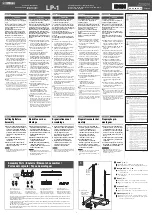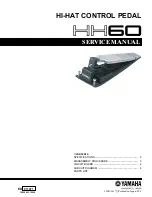
StormBoost v1.0
Manufacturer and product names are mentioned solely for circuit identification, and where applicable their trademarks are the
property of their respective owners who are in no way associated or affiliated with the author. No cooperation or endorsement
is implied.
5
Modifications
Onboard DIP switches
The original has 2 unconnected parts. First there is a RF filter cap (
C1
) and secondly there is an extra
electrolyte cap (
C6
) that controls the attack time of the boost. Both can be optionally engaged using
the Dip switches. If you do not want them, you can leave them out (
Dip1
,
C1
,
C6
).
Off board wiring
The biggest challenge of this build is to get all the offboard wiring correct and fit it in a box. Take your
time measuring and testing before you start fitting everything in the box.
P1
-
P3
are PCB mounted potentiometers (Alpha). The rectangle pad marks pin 1
of a potentiometer. The image shows how you can recognize which pin is which
on a potentiometer. You can break off the pin I marked with the
yellow circle
with a small pair of pliers.
Place the potentiometers in the predrilled enclosure and then insert the PCB.
Once the PCB fits nicely and is not touching the enclosure, solder the
potentiometers to the PCB. Now you will need to wire the footswitch, LED and
DC jack:
S
Tip
Sleeve
Sleeve
Output Jack
Input Jack
Cathode (short leg)
Anode (long leg)
Footswitch
Ring
R led
Tip
The LED requires a resistor (R led in the diagram) depending on the type of LED you are using. An
ultra-bright red, green or blue LED requires a 4k7 resistor, diffuse green requires 680R. If you want to
be more exact then go here:
http://www.muzique.com/schem/led.htm

























